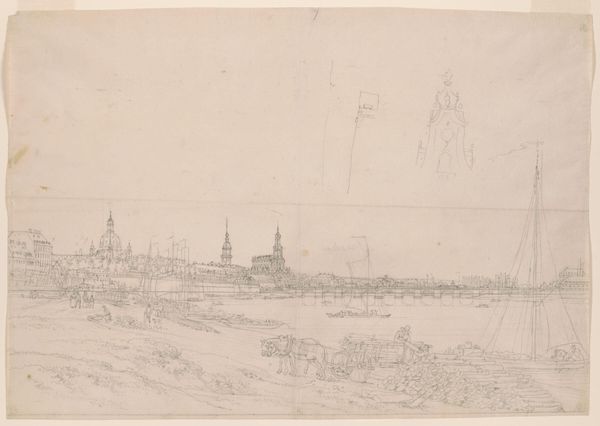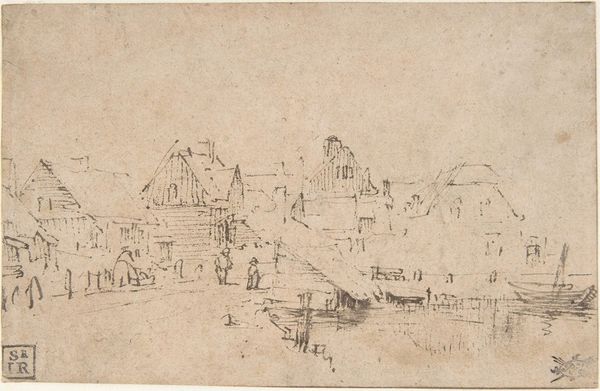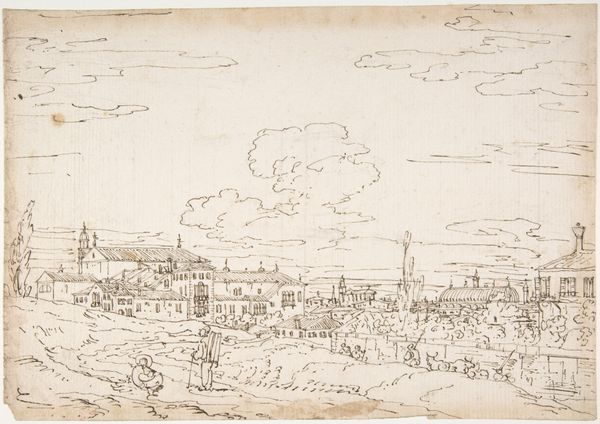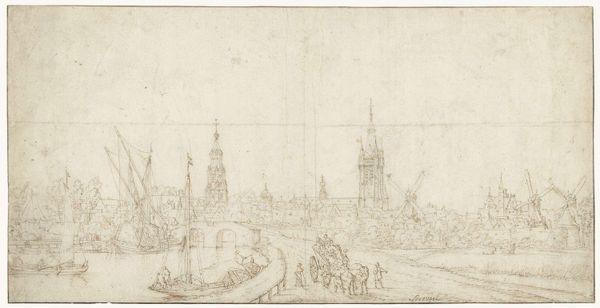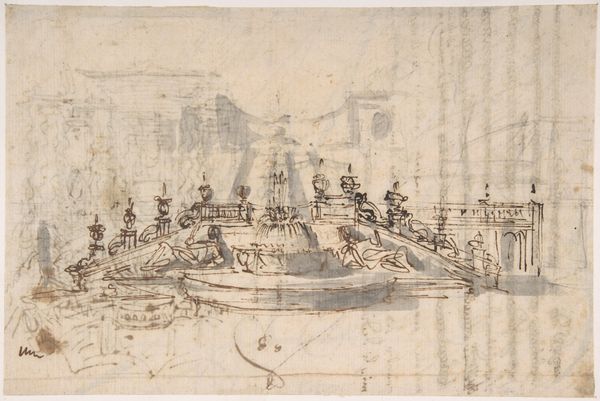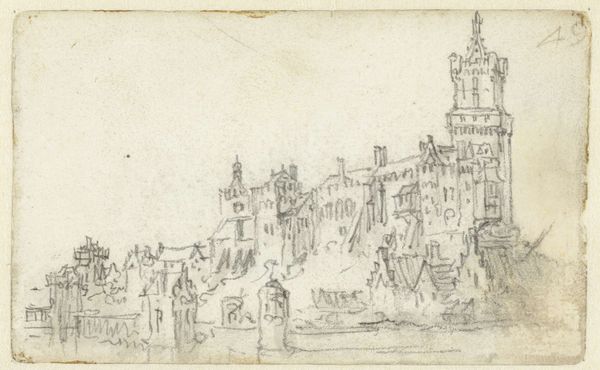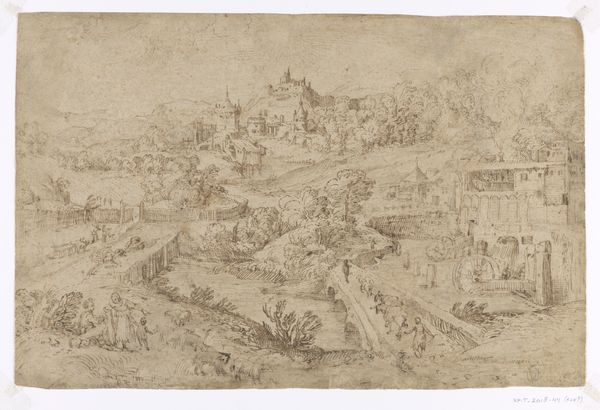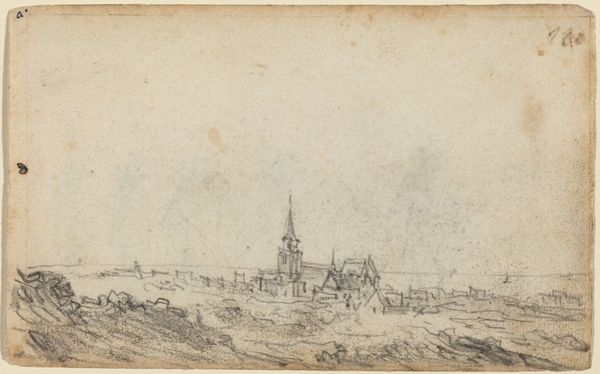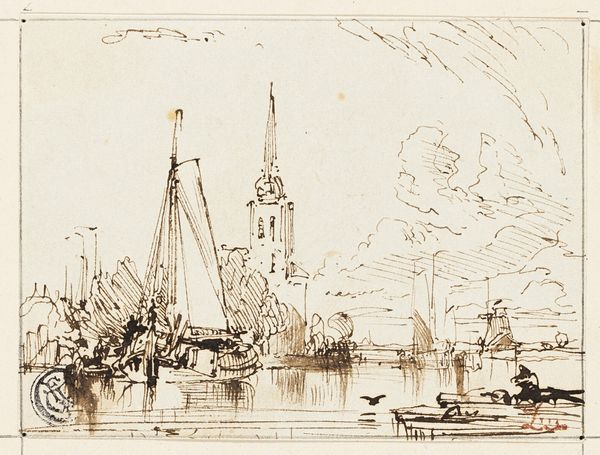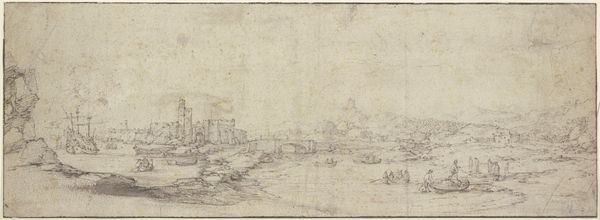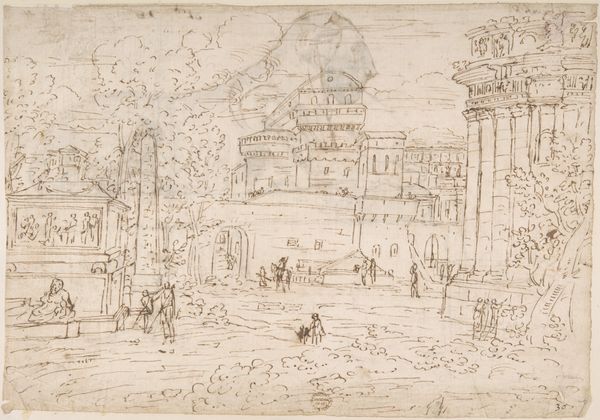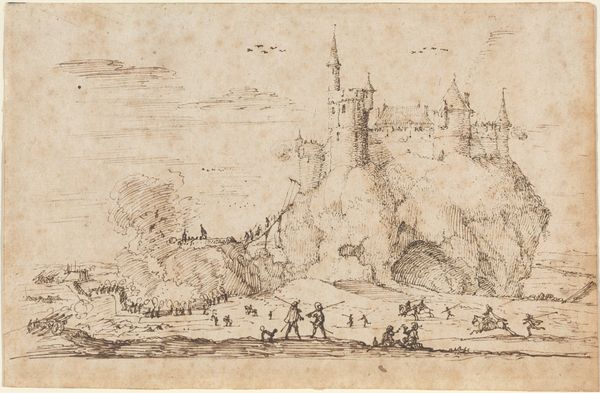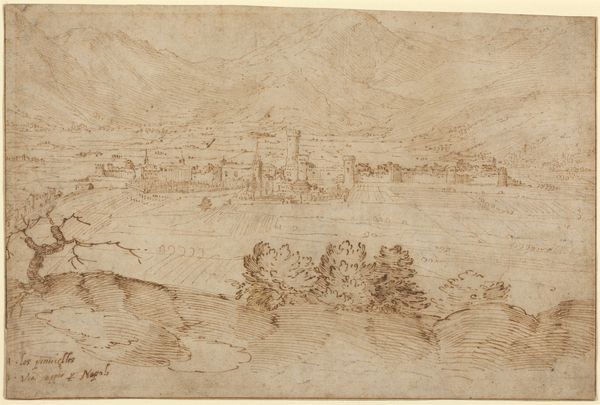
Figures Watching a Display of Fireworks at Castel Sant'Angelo, Rome (recto); A Distant View of the Fireworks Seen from a Villa Garden (verso) 1606 - 1680
0:00
0:00
drawing, ink
#
drawing
#
baroque
#
landscape
#
figuration
#
ink
#
cityscape
#
italian-renaissance
Dimensions: 10 1/8 x 14 5/8in. (25.7 x 37.1cm)
Copyright: Public Domain
Editor: This is “Figures Watching a Display of Fireworks at Castel Sant'Angelo, Rome” by Giovanni Francesco Grimaldi, made sometime between 1606 and 1680, using ink in a drawing. The fireworks make me think about celebrations, but the thin ink lines give it a somewhat unfinished quality, as though the revelry is fleeting. What stands out to you? Curator: Well, look closely at the means of production: ink on paper. How was paper produced then? Who had access to it? This drawing captures a leisure scene, but it’s important to consider who could afford the *time* for leisure, to watch fireworks, and who commissioned or consumed art like this. Is it recording reality, or shaping a desired narrative of power? Editor: I hadn’t thought about the paper itself. So, by considering who had access to paper, you’re saying that it becomes about the socio-economic structure of the time? It wasn't just some random sketch but tells the tale of a society? Curator: Exactly. Fireworks, like this drawing, are a product. Labor and materials are involved in both the spectacle and its artistic representation. Think about the consumption – of entertainment, of art – and who benefits. Consider the contrast: the grand display versus the relative austerity of the ink drawing as a commodity for a patron. Does Grimaldi elevate or subtly critique that relationship? Editor: So you’re suggesting the drawing’s “simplicity” perhaps highlights the fleeting nature of the spectacle itself, underscoring the labour involved in creating moments of elite enjoyment? That hadn’t occurred to me. Curator: Precisely! Art is never created in a vacuum. Exploring the materials and means of production opens a pathway to understanding its cultural context and purpose within society. Editor: I see now how closely analyzing materials allows you to interpret beyond the surface representation of the scene. Thanks, this was very insightful! Curator: Indeed, looking at art through the lens of materials and production always reveals a richer understanding of the world it inhabits.
Comments
No comments
Be the first to comment and join the conversation on the ultimate creative platform.
